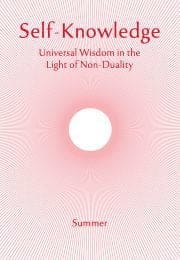The Non-Duality of Shri Shankara
Concluding our series of extracts from H P Shastri’s essay on the Outline of the Advaita of Shri Shankara
Release (Moksha)
According to the Advaita Vedanta of Shri Shankara, release (Moksha) is eternally true. By spiritual practices it is realised in our practical experience. Before an aspirant treads the path of Yoga he must cultivate the antecedent qualifications. He must hear from a self-realised Guru the inner meaning of the teachings, which will kindle the light of the infinite reality of the Self. The practice of selfless benevolence and contemplation of the nature of the Self converts the initial spark of the desire to know the Spirit into a flame. The ethical life as ordained in the Shastra, purifies the heart and then an aspirant can have experience of the pure light of the Spirit. The fire of contemplation and meditation creates the heat within, which ends in spiritual light. When the aspirant is established in the true Self, he or she experiences Shanti, spiritual bliss, for ever and for ever.
Those who have any doubts as to the profound use of devotion in Vedanta are referred to Shankara’s commentary on verse 50 of chapter 18 of the Bhagavad Gita. My teacher, Pundit Rishirama Shastri, who conferred on me the benefits of logic and who was a follower of Shankara’s Advaita, used to do devotion for three hours in the morning every day.
Now let us consider the relation between liberation (Moksha) and the values of life. There are some people who imagine that when the existence of the world has been negated and the individuality of the jiva has been merged in the non-individuality of the Attributeless, when the life of action has ended, there can be no difference between that Moksha or Shanti and death. This thought is due to a great misunderstanding about the nature of liberation in Advaita Vedanta. Let it be known that the peace (Shanti) which is the culmination of the discipline and practice in Vedanta is not the peace of death, neither is the accompanying extreme bliss the complete negation of experience. The peace is converted into the highest type of life, in which the practices and ethical discipline supply the heat and friction to produce the light of bliss.
It is true that the world does not share the absolute existence of Brahman, but the practical world nevertheless stands, though phenomenally, on Brahman itself. In this sense the world (jagat), having non-different co-existence with Brahman, is not void. The existence of jagat apart from Brahman is mere imagination. In the state of Moksha the world does not disappear as a dream disappears on awakening; but it disappears as an illusory snake disappears in its substratum, the rope, when the substratum is known.
The doctrine of Moksha is based on the illustration of the illusoriness of the world (jagat) being like an imagined snake in a rope. The knowledge of Truth, or illumination, does not end in the disappearance of jagat, but it shows the reality of jagat to be Brahman. A new light is thrown on the world on enlightenment which entirely changes our point of view and turns the world of thorns into a bed of roses of higher experience. The word ‘Bodha’, which is used by Shankara in connection with the disappearance of jagat in the state of illumination, means a clear-sighted interpretation of the world. Jnana does not eliminate the world but it gives us a new view of it. Let us remember that jnana and release are not conditioned by time. Moksha is not a vritti of the mind. It may be said that vivarta* is Shankara’s theory to account for jagat and illumination.
When Shankara in his commentary on Vedanta Sutras 2:1:14 speaks of the elimination of the world on realisation, he makes it clear that it is not a state subject to time and space. In his commentary on the Brihadaranyaka Upanishad (3:5:1) he enjoins a highly ethical life on a Jnani as well as on a student of Yoga. Illumination is not the elimination of our individuality but a manifestation of individuality in the form of infinity. The culmination of the teachings of the Upanishads in Self-realisation is the vision which transforms the individuality into the infinite non-dual principle. It is different from the philosophical ideal of Spinoza or Leibniz. Shri Shankara holds the important doctrine that unreality can be indicative of reality. The whole matter depends on experience. In the Upanishads the individuality is a means to the attainment of the supreme Truth. Shankara calls an Acharya ‘one established in Brahman’ (Brahma nishtha) and ‘he who sees inseparability’ (Commentary on Katha Upanishad 1:2:8).
Subscribe or enrol for free guest access to read all of this article and Self-Knowledge online.
Already subscribed or enrolled? Log in:


